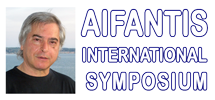Abstract:
Sustainable and renewable energy sources, such as hydropower, solar energy, and wind power, in conjunction with flexible energy storage systems, such as rechargeable batteries and supercapacitors, are one of the key solutions to release the heavy burden on the current energy infrastructure and the environment. Recently, supercapacitors have emerged as a new class of promising energy storage devices because of their higher power density, faster charge-discharge rate, and longer cycle lifetime than those of rechargeable batteries. Supercapacitors can also store more energy than conventional dielectric capacitors. The central issues in the development of practical supercapacitors are the selection and fabrication of high-performance electrode materials. Among the emerging electrode materials for supercapacitors, redox-active transition-metal oxides such as RuO2, NiO, Fe2O3, SnO2 and MnO2, are the most attractive materials due to their high specific capacitances from the fast and reversible redox reactions on the electrode surface.
In particular, MnO2 has drawn recent interest as a potential electrode material for supercapacitors because of its high specific capacitance (theoretical value of ~1370 F/g), low cost, natural abundance, and environmental benignity. However, the practical use of MnO2 as electrode materials is largely weight-down due to its poor electrical conductivity (10-5 - 10-6 S/cm), which limits the charge-discharge rate of the supercapacitors; as well as a relatively small surface area of bulk MnO2, which constraints the energy that can be stored in a particular electrode. An effective way to improve the utilization of MnO2 (thus increasing the energy density) is to reduce the MnO2 particles to the nanometer range, in which small particles have a characteristic high surface to volume ratio. The major strategy to improve the electrical conductivity of the MnO2 electrodes is to combine conductive materials (e.g., carbon-based materials, metals, and oxides) to MnO2, forming MnO2 composite electrodes with improved conductivities.
In our recent works, various MnO2 nanosturctures, including nanowires, nanoflakes, nanotubes and nanoporous structure, have been prepared by facile methods, such as electrodeposition and hydrothermal synthesis, and their supercapacitive properties have been systemically investigated. In order to overcome the poor electrical conductivity of MnO2, a core-shell hierarchy architectured MnO2/CNT nanocomposite was designed and fabricated. The MnO2/CNT nanocomposite electrode exhibits much higher specific capacitance compared to those of the CNT and the pure MnO2 electrodes and significantly improved rate capability compared to that of the pure MnO2 electrode. To provide a three-dimensional conductive scaffold that can maximize the loading of nano MnO2 and increase the area-normalized capacitance, we proposed a novel architectural design of a ternary MnO2-based electrode - a hierarchical Co3O4@Pt@MnO2 core-shell-shell structure, where the complemental features of the three key components (a well-defined Co3O4 nanowire array on the conductive Ti substrate, an ultrathin layer of small Pt nanoparticles, and a thin layer of MnO2 nanoflakes) are strategically combined into a single entity to synergize and construct a high-performance electrode for supercapacitors. More discussions will be given in the conference.
|








